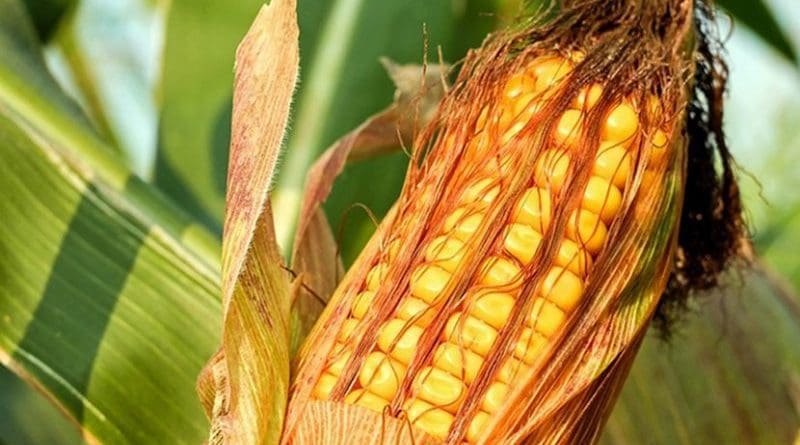Save Your Soybeans And Corn, Iowa’s ‘Goldilocks’ Period Won’t Last
Over the past few decades, Iowa’s agriculture has experienced a period of consistently high yields. The perfect distribution and timing of humidity, rainfall and heat have led to bumper crops of corn and soybeans. This “Goldilocks” period is partly due to global warming, but experts believe farmers shouldn’t expect it to last.
In an article from Physics Today’s February issue, “Iowa’s agriculture is losing its Goldilocks climate,” scientists Eugene Takle and William Gutowski describe the challenges farmers could expect to see to maintaining high yields if global warming continues along predicted trends.
Takle and Gutowski address the changes in Iowa’s agriculture over the past several decades. An upward trend in production, which they call a Goldilocks period, has occurred as a result of better technology and management along with more favorable weather. According to their research on climate change, the researchers say this ideal combination is not expected to last.
Farmers make seasonal agricultural decisions based on the weather and climate. To track these decisions and understand their impact, Takle and Gutowski previously developed a decision calendar specific for raising corn in the Midwest.
“The decision calendar is targeted at weather and climate forecast communities in an effort to help them make tailored climate forecasts,” said Takle. “We wanted to demonstrate physical links to slow moving changes, such as the gradual rising of global temperatures, the warming of the Gulf of Mexico and more.
“Forecasters can use the calendar to identify the timing of weather and climate vulnerabilities and, subsequently, to better forecast extreme weather events that will affect specific stages of the growing cycle.”
Takle and Gutowski emphasize the issue of climate change and its impact on agriculture need to be considered holistically and the multitude of factors that make up climate, such as the timing and trends in changes of humidity, rain and temperature, must all be considered.
“If technology could keep up indefinitely, then maybe the negative effects of climate change could be suppressed or avoided. But we can’t maintain things the way they are and prevent the decline of the Goldilocks period,” said Gutowski. “Once climate change starts, it will lead to changes in the future that can’t be undone even if we took the most drastic steps right now to reduce emission or bring down CO2 levels.”
Although the changes Gutowski and Takle foresee might not be avoidable, they believe by improving agricultural forecasting, continued improvements in agricultural management and biotechnology can help crops adapt to an altered climate.
“Despite the challenges that farmers face from changing climate, they also may have opportunities to mitigate the effects of climate change on agriculture. Agricultural practices may be used to better capture carbon in the soil and improve growing conditions for future years,” said Gutowski.

